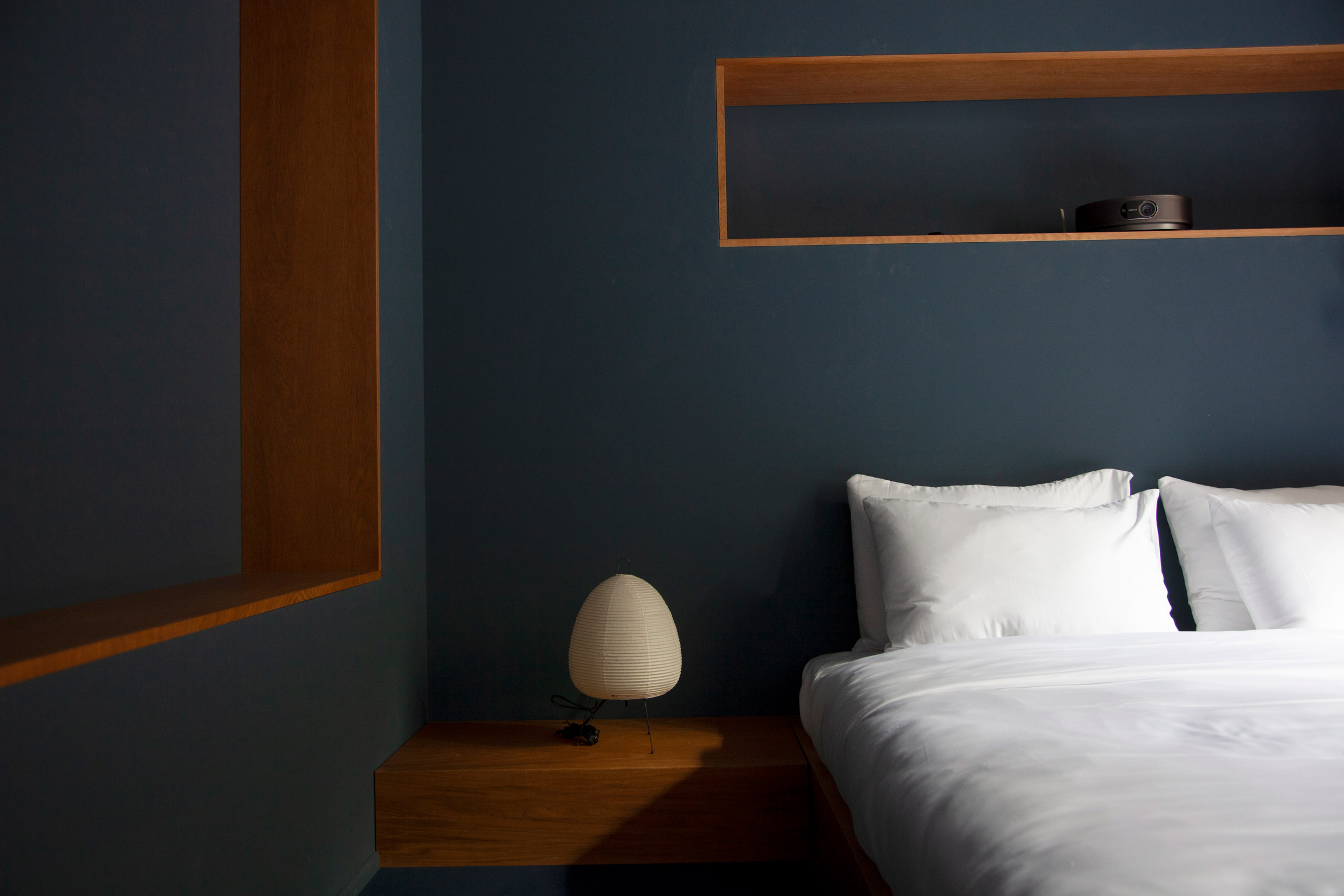[ad_1]

Georgian architect Sandro Takaishvili has converted an apartment building in Tbilisi into a hotel, with interiors informed by his love of cinema and movie projectors in all 16 rooms.
Taking over three storeys above a restaurant in the capital’s Vera neighbourhood, the Blueberry Nights hotel features a theatrical colour scheme, Japanese furnishings and moody lighting.

“The design of the hotel is the culmination of my entire life’s consumption of film,” the hotel’s co-founder Sandro Takaishvili told Dezeen.
“My intention is to make people feel like they’re inside a movie, where everything feels slightly familiar but otherworldly at the same time,” said the architect, who previously worked as a set designer, filmmaker and photographer.

The hotel was named after My Blueberry Nights – a film by Hong Kong director Wong Kar-Wai – and incorporates visual references to the work of other renowned directors including Stanley Kubrick.
The main lobby was designed to look and feel like a cosy cinema foyer, complete with dark blue carpeting, walnut wood furniture and seating upholstered in velvet. Guests can check in at a large reception desk fronted in plexiglass that was inspired by retro-futuristic films.

“From the moment guests step through the doors, a moody cinematic journey begins with dark blue carpets, downlights and a soft soundtrack of noir movie dialogues playing in the lobby,” Takaishvili said.
As part of the renovation, Takaishvili transformed the building’s attic into two extra guestrooms, for a total of 16 rooms.
The bedrooms were designed to evoke the visual style of David Lynch, with custom-made low-slung beds and walnut-veneer cabinets. Room dividers punctured by large circular openings were used to mark different zones within the rooms.
The warm wooden furniture is offset by splashes of red – in the form of vintage phones, artwork and window shutters made from medium-density fibreboard (MDF) – as well as the white tiles used in the tiny en-suite bathrooms.

Other bedroom decor includes lamps with Noguchi-style paper shades, which Takaishvili imported from Japan, and teak-and-cane chairs by architect Pierre Jeanneret, which were sourced from London.
“The paper lights give off a soft luminescent effect that creates a cosy ambience,” the architect explained.
“Some of the simple geometric forms that I used definitely have a mid-century influence but I wasn’t trying to be trendy. I just wanted to achieve a cinematic effect without resorting to obvious movie gimmicks.”

One wall was left blank in each room so that guests can watch movies via a smart projector, while music can be played via a selection of vinyl records.
Other interior projects in Tbilisi include a bookstore-cum-cafe by Georgian designer Lado Lomitashvili and the Stamba Hotel, which occupies the former headquarters of a Soviet printing press.
The photography is courtesy of Blueberry Nights.
The post Tbilisi's Blueberry Nights hotel makes "people feel like they're inside a movie" appeared first on Dezeen.
[ad_2]
www.dezeen.com










